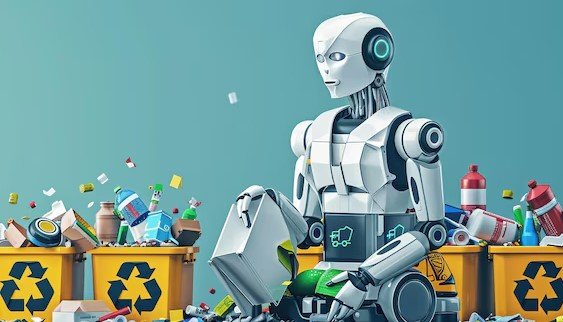Artificial intelligence is changing the recycling world, with three key technologies earning spots on Time Magazine’s Best Inventions of 2025. AMP One, Glacier, and Greyparrot use smart systems to sort waste faster and smarter, helping reduce landfill trash and boost recovery rates across the United States and beyond.
The Rise of AI in Waste Management
Recycling faces big challenges today, with global rates stuck around 14 percent according to recent industry reports. AI steps in to fix this by spotting materials that humans might miss.
These tools analyze waste streams in real time, cutting down errors and speeding up the process. For example, facilities equipped with this tech can handle tons of mixed recyclables every hour, turning chaos into organized resources.
Experts say this shift comes at a perfect time, as cities push for better sustainability goals amid growing plastic pollution concerns.
Spotlight on the Top Innovations
Time Magazine highlighted AMP One as a full scale facility solution that automates entire recycling plants. It uses advanced cameras and machine learning to identify and separate items like plastics and metals with high accuracy.
Glacier brings affordable robotic arms powered by computer vision. These robots recognize over 30 types of materials, making them ideal for smaller operations looking to upgrade without huge costs.

Greyparrot offers an analyzer that profiles waste using AI cameras. It provides data on what ends up in recycling bins, helping companies understand consumer habits and improve packaging designs.
All three made the cut for their potential to reshape how we handle everyday trash.
How These Tools Transform Recycling
AI sortation boosts efficiency by reducing contamination in recycling loads. Clean streams mean more materials get reused instead of dumped.
Brands gain insights from the data these systems collect. They learn if their packaging confuses consumers or fails during sorting.
Here are key benefits:
- Higher recovery rates: Facilities report up to 20 percent more materials saved from landfills.
- Cost savings: Automation cuts labor needs while increasing throughput.
- Environmental wins: Less waste means lower emissions and preserved resources.
This tech also adapts to new materials, like compostable plastics, keeping pace with industry changes.
Recent deployments show promise. One facility in Pennsylvania recently added Glacier robots, serving over 60 counties and improving local recycling efforts.
Real World Examples and Data
To see the impact, look at how these technologies perform in action. Facilities using AI report better results compared to traditional methods.
| Technology | Key Feature | Reported Improvement | Example Location |
|---|---|---|---|
| AMP One | Full plant automation | 30 percent faster sorting | Colorado based operations |
| Glacier | Robotic arms with vision | Identifies 30 plus materials | Pennsylvania recovery facility |
| Greyparrot | Waste profiling cameras | Real time analytics | Global recycling plants |
These examples highlight practical gains. In one case, a site using Greyparrot reduced unsorted waste by 15 percent in just months.
Such data drives investment, with startups like these raising millions in funding this year to expand.
Communities benefit too, as cleaner recycling leads to stronger local economies through job creation in green tech.
Challenges and Future Outlook
No solution is perfect. High setup costs can deter smaller facilities from adopting AI tech. Training staff to work alongside robots takes time and resources.
Integration with existing systems poses another hurdle, as not all plants are ready for digital upgrades.
Looking ahead, experts predict wider adoption by 2030, driven by regulations on plastic waste. Innovations could extend to household bins, making recycling easier for everyone.
Ongoing research focuses on making AI even smarter, handling complex items like electronics or textiles.
As these technologies evolve, they promise a cleaner planet with less waste overwhelming our landfills.
What do you think about AI in recycling? Share your thoughts in the comments below and spread the word to help promote sustainable practices.








